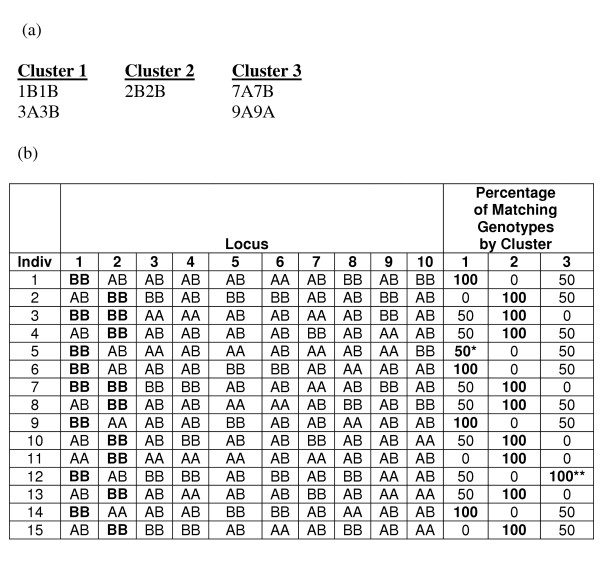Figure 16.

Example of Post-processing of Hypergraph Clustering Result. Hypergraph clustering produces a clustering of genotypes, instead of individuals. Thus, a clustering of individuals must be induced from this clustering of genotypes. As described in the text, an individual in assigned to the cluster for which it has the highest percentage of matching genotypes. Given the dataset presented in Figure 15(a) and a clustering of genotypes that is presented here (a), a clustering of individuals can be induced (b). For each individual (row), the percentage of matching genotypes that is highlighted indicates to which cluster the individual becomes assigned. Notice that for individual 5, there is a tie between the percentage of matching genotypes for clusters 1 and 3. In such cases, we arbitrarily assign the individual to the lower numbered cluster. Since cluster 3 does not contain any high-risk genotypes, it does not facilitate the goal of creating a clustering that maps to the simulated trait heterogeneity, and in the case of individual 12, it ends up capturing an individual who would preferably be clustered in cluster 1.
